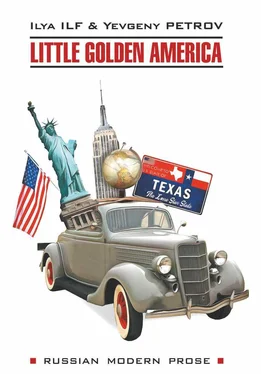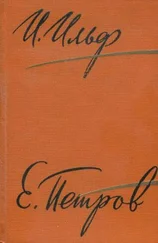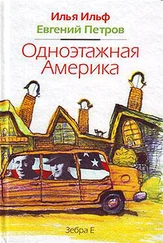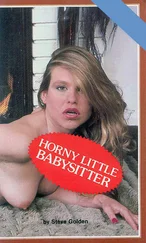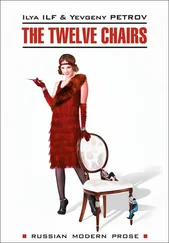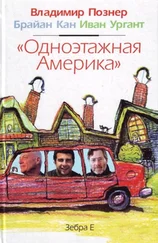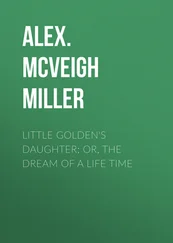New York was asleep, and a million Edison lamps were guarding its slumber. Immigrants from Scotland, from Ireland, from Hamburg and Vienna, from Kovno and Bialystok, from Naples and Madrid, from Texas, Dakota, and Arizona, were asleep. Asleep were also immigrants from Latin America, from Australia, from Africa and China. Black, white, and yellow people were asleep. Looking at the scarcely trembling lights, we wanted to find out as soon as possible how these people work, how they amuse themselves, what they dream of, what they hope for, what they eat.
Finally, utterly exhausted, we, too, went to bed. We had had altogether too many impressions for the first day. New York cannot be taken in such large doses. It is a frightful, yet at the same time pleasant, experience to have one’s body lie in a comfortable American bed, in a state of complete rest, while the mind continues to rock on the Normandie, to ride in a wedding-carriage taxi, to run along Broadway, to travel.
In the morning, having awakened on our twenty-seventh story and having looked out of the window, we saw New York in a pellucid morning mist.
We beheld what might be called a peaceful pastoral scene. A few white threads of smoke rose to the sky, while to the spire of a small twenty-story hut was even attached an idyllic and all-metal cockerel. Sixty-storied skyscrapers, which yesterday evening seemed so close, were separated from us by at least ten red iron roofs and a hundred high stacks and skylights, among which laundry hung and the most ordinary cats wandered about. On the walls could be seen advertisements. The walls of the skyscrapers were full of brick dullness. Most of the buildings in New York are made of red brick.
New York opened at once on several planes. The upper plane was occupied by the tops of those skyscrapers which were higher than ours. They were crowned with spires – glass or gold cupolas gleaming in the sun, or towers with large clocks. The towers themselves were the height of a four-story house. On the next plane, open in its entirety to our gaze, in addition to stacks, skylights, and tomcats one could see flat roofs on which were small one-storied houses with gardens, skimpy trees, little brick paths, a small fountain, and even rattan chairs. Here one could pass the time of day to perfection, almost as at Klyazma, inhaling the petrol perfume of flowers, andlistening to the melodic baying of the elevated railway. That monstrosity was on the next plane of New York City. The railway lines of the elevated rest on iron poles and pass on the level of the second and third stories, and only in certain parts of the city do they rise to the fifth or sixth story. This antiquated structure discharges from time to time a horrible clatter that numbs the brain. It causes healthy people to become nervous and the nervous to lose their minds, while the insane jump at the sound in their padded cells and roar like lions. In order to see the last and fundamental plane, the plane of the street, one had to bend out of the window and look down at a right angle. There, as in reversed binoculars, one could see a tiny crossing with tiny automobiles, pedestrians, newspapers strewn on the pavement, and even two rows of shining buttons attached to the lanes where pedestrians are allowed to cross the street.
From the other window one could see the Hudson River, which separates the State of New York from the State of New Jersey. The houses that go down to theHudson are in New York, while the houses on the other side of the river are in Jersey City. We were told that what at first glance seems a strange administrative division has its compensations. One can, for example, live in one State and work in another. One could also indulge in speculations in New York while paying taxes in Jersey. There, by the way, the taxes are not so high. This seems to add colour to the grey monotonous life of a stockbroker. Or one can get married in New York and get divorced in New Jersey, or the other way around. It all depends upon where the divorce laws are easier and where the marriage-breaking process is cheaper. We, for example, when buying the automobile for our journey through the country, insured it in New Jersey, which charges a few dollars less than New York.
4. Appetite Departs While Eating
THE NEWCOMER need have no fear about leaving his hotel and plunging into the New York jungle. Despite the amazing sameness of its streets, it is well-nigh impossible to get lost there.
Yet the secret is simple. The thoroughfares are divided into two types: the perpendicular ones, oravenues; and the horizontal, or streets. Thus the island of Manhattan has been laid out. Parallel to each other are First, Second, and Third avenues. Then parallel to them is Lexington Avenue, Fourth Avenue, a continuation of which from the central railway station bears the name of Park Avenue (that is the street of the wealthy), MadisonAvenue, beautiful (shopping district) Fifth Avenue, Sixth, Seventh, and so forth. Fifth Avenue divides the city into two parts, the East and West. All these avenues (and they are many) are crossed by streets, of which there are several hundred. And if the avenues have certain distinguishing attributes (some are wider, others are narrower; there is an elevated over Second, Third, Sixth, and Ninth; in the middle of Park Avenue is a grass plot; on FifthAvenue tower the Empire State Building and Radio City), the streets are quite indistinguishable, and even old New Yorkers cannot tell one street from another by any out-ward signs. The geometry of New York is violated only by meandering Broadway, which crosses the city diagonally on its run of a score of miles.
The main shoals of pedestrians and automobiles advance along the wide avenues. Under them like coal-mines lie the black and damp, four-track tunnels of subways. Over them is the iron thunder of the elevated. Here are all the types of transport – even several old-fashioned, double-deck autobuses and street-cars. Doubtless, in Kiev, where street-car traffic has been removed from the main street, people would be amazed to hear that down Broadway, the liveliest street in the world, a street-car still hobbles along. Woe to the man who must cross the city, not lengthwise but crosswise, and who would be stricken with the insane idea of taking a taxi-cab for that purpose! His taxi will turn into a street and head straight into a chronic cul-de-sac. While policemen drive the snorting automobile flocks down the length of the avenues, hordes of indignant schlemiehls and maniacs congregate in the dirty narrow lanes that cut the city – no, not lengthwise but crosswise. The queues stretch for several blocks, chauffeurs fidget in their seats, passengers impatiently stick their heads out of windows and, falling back in anguish, open their newspapers.
It is hard to believe, yet it is a fact that some seventy years ago on the corner of Fifth Avenue and Forty-second Street, on the very spot where more automobiles can flock together in five minutes than there are in all of Poland, stood a wooden inn which had the following two significant notices posted for the benefit of American travellers:
IT IS FORBIDDEN TO GO TO BED IN BOOTS
and
IT IS FORBIDDEN FOR MORE THAN SIX GUESTS TO SLEEP IN ONE BED
We left the hotel to lunch somewhere, and soon found ourselves on Forty-second Street. During our first days in New York, no matter where we were bound for, we invariably landed on Forty-second Street.
In the crowd, which carried us along, we heard shreds of that quick New York speech which surely must be as strange to the ear of a Londoner as it is to the ear of a Muscovite. Along the walls sat boys-bootblacks, who drummed their brushes on their crudely fashioned wooden boxes, touting for customers. Street photographers aimed their cameras at the passers-by, choosing usually ladies with escorts or tourists from the sticks. After clicking his camera, the photographer would approach the object of his attack and press on him the printed address of his studio. For twenty-five cents the photographed pedestrian may have a candid photograph of himself, a splendid photograph, in the uninhibited act of raising his leg.
Читать дальше
